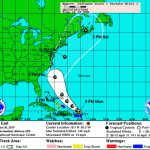
Bathymodiolus azoricus mussels
Like many bivalves, the deep-sea hydrothermal mussel Bathymodiolus azoricus anchors itself to the bottom using byssal threads. Bacteria have been spotted within these threads and may be responsible for the unusually high metal concentrations of iron, copper, and zinc in the byssus, as demonstrated by X-ray microanalysis of the deposits surrounding bacterial cells. Fluorescent probes, specific to the methanotroph endosymbiont bacteria typically found in the gills of these mussels, also hybridized with the intra-byssal bacteria. This suggests these symbiotic bacteria, in addition to providing the host with nutrients, may be playing a role in metal sequestration and deposition. It is interesting to speculate on their role in synthesis of organic molecules that may contribute to the adhesive properties of the byssal plaque in spite of corrosive conditions typical of hydrothermal vent environments. More broadly, the unprecedented metal levels in byssus, plus its frequent renewal rate due to the dynamic nature of the habitat, suggest that intra-byssal bacteria may have a great influence on biomineralisation/deposition of manganese, which in turn acts as a scavenger for other metals.
*IMAR Centre of the University of Azores, Horta, Portugal
More on this research can be found here and here

Electron dense deposition in a more advanced phase of biomineralisation within the collagenous net of the byssus with remains of bacterial cells at the origin of each deposition, credit Eniko Kadar

Higher magnification of one dead bacteria showing electron-dense deposition (darker areas) surrounding the cell, credit Eniko Kadar

Fluorescent in situ hybridization (FISH) showing intra-byssal bacteria ‘lighting up’ with the probe specific for the methanotroph gill symbionts, credit Eniko Kadar





